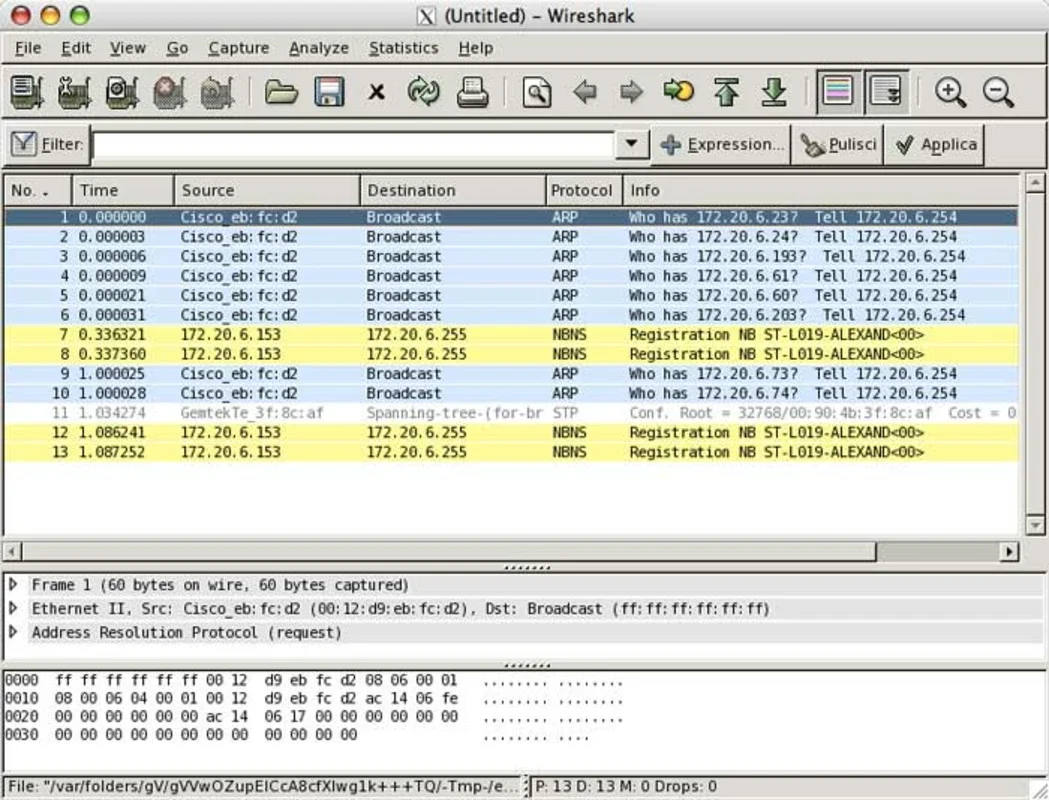Wireshark App Introduction
Wireshark is a highly powerful and versatile tool designed for network analysis. It offers a wide range of features and capabilities that make it an essential tool for network administrators, security professionals, and anyone interested in understanding the inner workings of a network.
1. Protocol Analysis
Wireshark is renowned for its ability to analyze the protocols involved in network communications. By delving deep into the data packets intercepted by the various devices in the system, it provides valuable insights into how the network is functioning. The hexadecimal display at the bottom of the interface offers a detailed view of the contents of each captured data packet, allowing for a granular analysis of the network traffic.
2. Extensive Filtering System
The included filtering system is a standout feature of Wireshark. It enables users to selectively choose which data packets to focus on and which to discard. This functionality is crucial for sifting through large amounts of network data and extracting the relevant information. Whether it's for troubleshooting network issues or conducting security audits, the filtering system proves to be an invaluable asset.
3. Real-Time Capture and Offline Analysis
Wireshark supports real-time capture of network traffic, ensuring that users can monitor the network as events occur. Additionally, the ability to perform offline analysis allows for a more in-depth examination of captured data at a later time. This flexibility is particularly useful when dealing with complex network issues that may require a more detailed analysis.
4. Data Processing and Decoding
Wireshark is capable of extracting compressed data files on the fly using GZip and decoding a variety of secure protocols such as IPsec, ISAKMP, Kerberos, SSL/TLS, or WPA/WPA2. It also has the ability to process VoIP traffic, making it a comprehensive solution for handling a diverse range of network protocols and data types.
5. Compatibility and File Formats
Wireshark is compatible with a wide range of devices and networks, including Ethernet, IEEE 802.11, ATM, Bluetooth, USB, Token Ring, and Frame Relay. It also supports various capture file formats, such as tcpdump, catapult DCT2000, Cisco Secure IDS iplog, Microsoft Network Monitor, Network General Sniffer, and many others. This broad compatibility ensures that Wireshark can be used in a variety of network environments and with different types of data.
6. Export Options
The ability to export the captured information to XML, PostScript, CSV, and plain text formats provides users with the flexibility to share and analyze the data in other applications. This makes it easier to integrate Wireshark into an existing workflow and collaborate with others on network analysis tasks.
In conclusion, Wireshark is an indispensable tool for anyone working with networks. Its comprehensive features, wide compatibility, and powerful analysis capabilities make it a top choice for professionals and enthusiasts alike.
